1920s
Keep the mouth glands active
"unless we watch out, the mouth glands slow up and decay sets in. The formula to correct this was worked out in Pebeco Tooth Paste."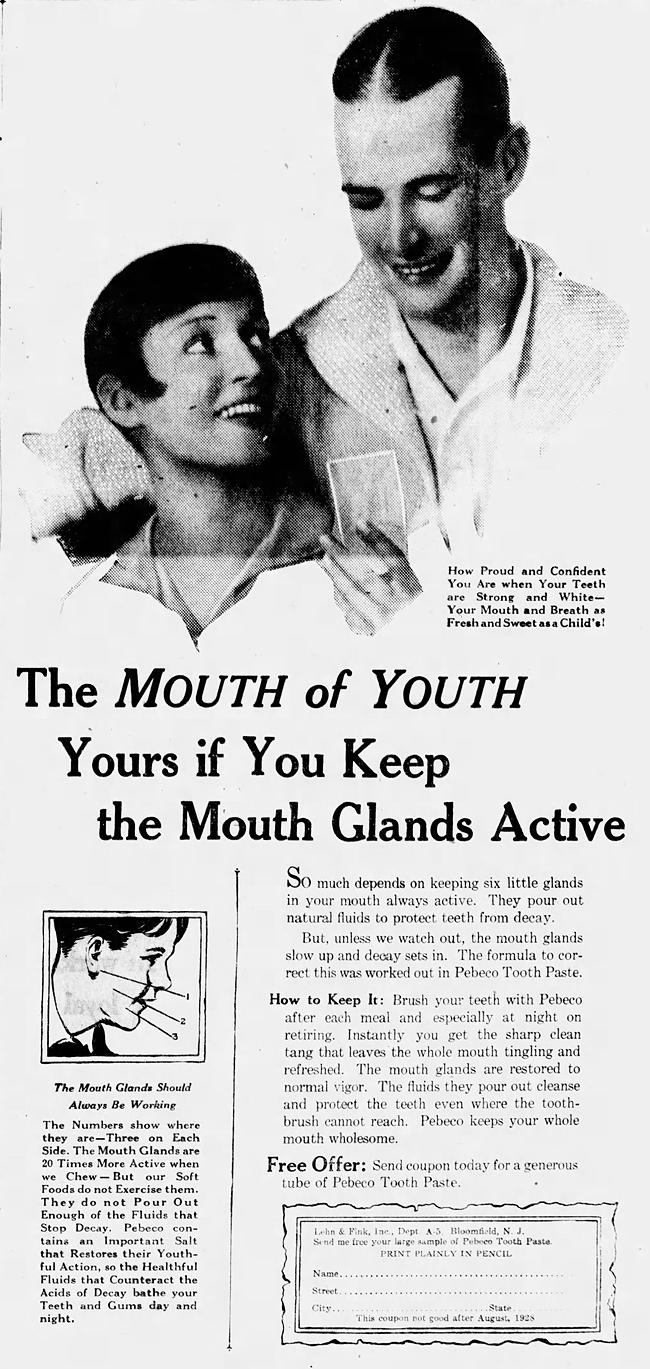
San Francisco Examiner - Aug 21, 1927
Posted By: Alex - Mon Aug 24, 2020 -
Comments (1)
Category: Hygiene, Advertising, 1920s, Teeth
Queen Mary’s Dollhouse
Queen Mary's Dolls' House is the largest, most beautiful and most famous dolls' house in the world. Built between 1921 and 1924 for Queen Mary, consort of George V, by the leading British architect Sir Edwin Lutyens, it includes contributions from over 1,500 of the finest artists, craftsmen and manufacturers of the early twentieth century. From life below stairs to the high-society setting of the saloon and dining room, and from a library bursting with original works by the top literary names of the day, to a fully stocked wine cellar and a garden, created by Gertrude Jekyll, no detail was forgotten. The house even includes electricity, running hot and cold water and working lifts. Each room is fully furnished and waiting to be explored.
The official homepage.
Article on the library therein.
Posted By: Paul - Mon Aug 10, 2020 -
Comments (2)
Category: Architecture, Buildings and Other Structures, Domestic, Enlargements, Miniatures, and Other Matters of Scale, Royalty, 1920s, United Kingdom
Are our feet turning to hoofs?
Source: Illustrated World - Apr 1920Something to worry about, if you have nothing else at all in your life to worry about.

Posted By: Alex - Thu Aug 06, 2020 -
Comments (3)
Category: 1920s, Feet
National Association for the Improvement of the Appearance of Hogs
I suspect the National Association for the Improvement of the Appearance of Hogs had only one member.
Argus Leader - Jan 5, 1925
Posted By: Alex - Sat Jul 25, 2020 -
Comments (1)
Category: Animals, Beauty, Ugliness and Other Aesthetic Issues, 1920s
The strange death of Frank Hayes
June 4, 1923: Jockey Frank Hayes suffered a heart attack and died while riding the horse Sweet Kiss in the steeplechase at Belmont Park. He nevertheless won the race.It's the only time that a horse race has been won by a dead jockey. And it's probably also the only time that a sports competition has been won by a dead contestant.
More info: wikipedia
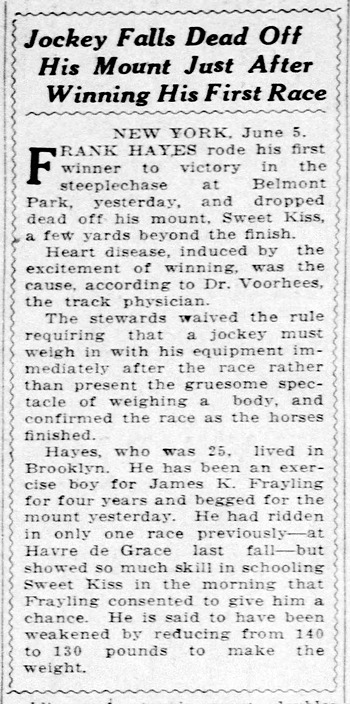
St. Louis Post-Dispatch - June 5, 1923
Posted By: Alex - Thu Jul 09, 2020 -
Comments (7)
Category: Death, Sports, 1920s
Wolf eats man’s face
The photo below captures the moment a wolf started to attack the face of its trainer, Jacques Suzanne, during the filming of a movie. The camera crew, thinking the attack was part of the stunt, kept on filming.Suzanne evidently wasn't badly hurt, though the wolf was killed. Apparently he was the kind of guy who knew how to defend himself against a wolf. Read more about him in Adirondack Life magazine.
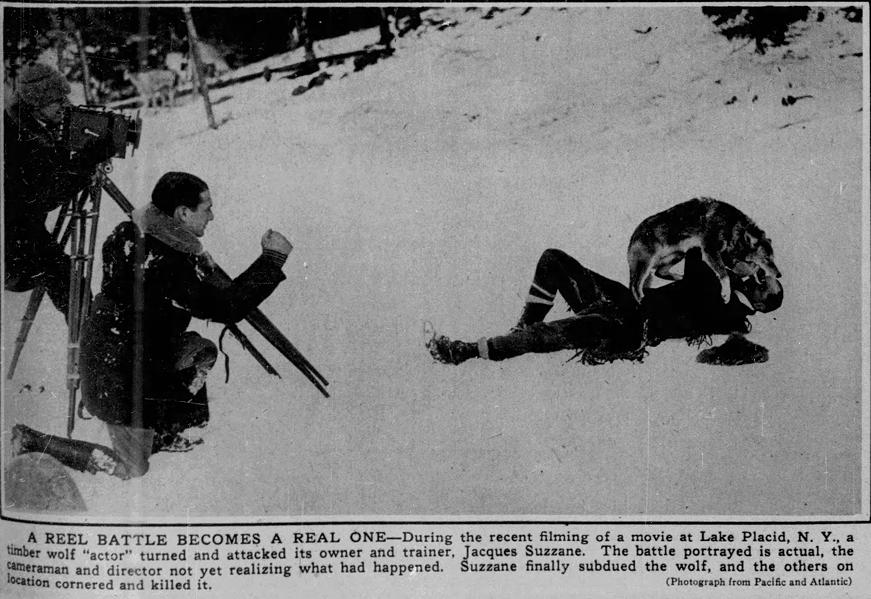
Chicago Tribune - Feb 20, 1927
Posted By: Alex - Tue Jun 23, 2020 -
Comments (0)
Category: Animals, Dogs, 1920s
Man-Catching Tank
Stanley Valinski's "man-catching tank," for which he received a patent in 1921 (#1,392,095), looked a bit like a dalek prototype.He imagined it would be used in banks for catching and holding burglars. It consisted of an armored watchbox concealing an armed watchman who could peer out through peep holes. The entire device moved on electric-driven wheels, which the watchman could steer. Upon spotting a burglar, he would maneuver the tank into position and then grasp the criminal with six enormous steel claws attached to the side of the machine.
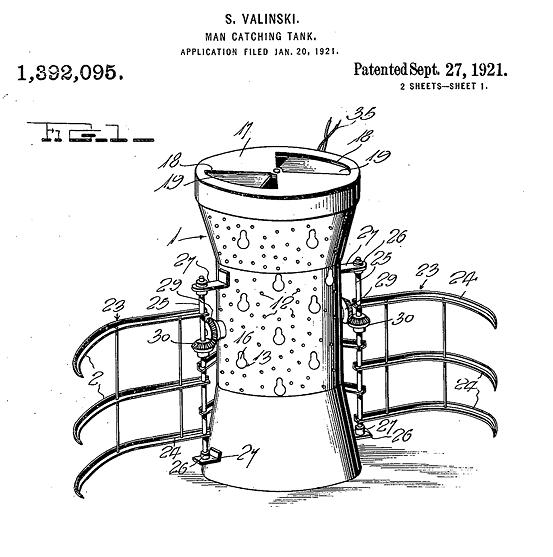
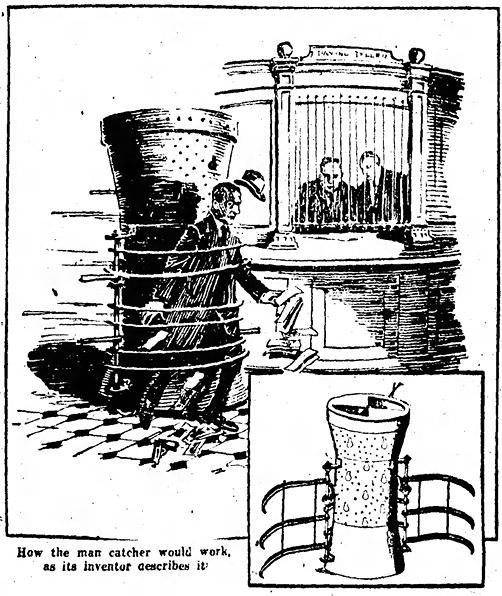
Wichita Daily Times - Dec 18, 1921
Posted By: Alex - Sun Jun 14, 2020 -
Comments (0)
Category: Crime, Inventions, Patents, 1920s
Sugar Doping
1924: Despite being fed sweet hot tea and peppermint creams in an experimental attempt to increase their energy, the Yale soccer team lost to the visiting team by 5 to 1.
Bridgeport Telegram - Nov 11, 1924
Posted By: Alex - Wed Jun 10, 2020 -
Comments (0)
Category: Sports, Experiments, Junk Food, Nutrition, 1920s
Mystery Illustration 95
What type of craft was host to these scenes? Luxury railroad car perhaps? Ocean liner? What's your guess?The answer is here.
Or after the jump.
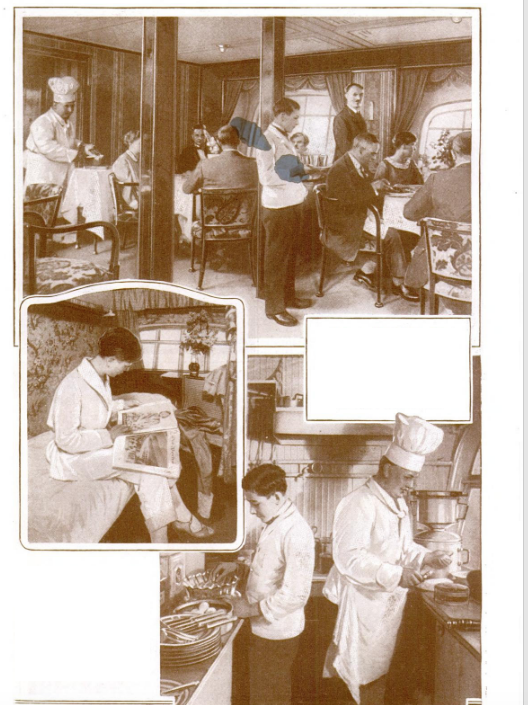
More in extended >>
Posted By: Paul - Fri Jun 05, 2020 -
Comments (6)
Category: Travel, 1920s
“I have a trunkful of money to deposit”
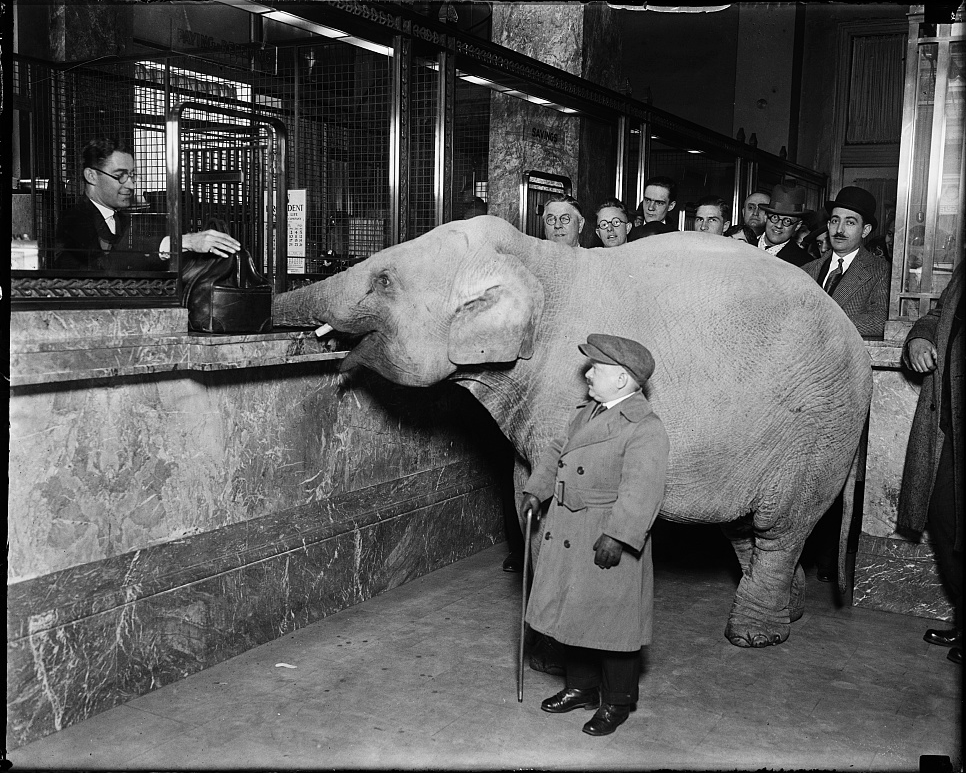
Charlie Becker, midget trainer with Singer's Midgets, walked the smallest elephant of his troupe to Merchant's Bank, and made a deposit for Keith's Theatre. The elephant delivered the money satchel directly to the receiving teller
Source.
Posted By: Paul - Tue May 19, 2020 -
Comments (1)
Category: Animals, Money, 1920s

| Who We Are |
|---|
| Alex Boese Alex is the creator and curator of the Museum of Hoaxes. He's also the author of various weird, non-fiction, science-themed books such as Elephants on Acid and Psychedelic Apes. Paul Di Filippo Paul has been paid to put weird ideas into fictional form for over thirty years, in his career as a noted science fiction writer. He has recently begun blogging on many curious topics with three fellow writers at The Inferior 4+1. Contact Us |




